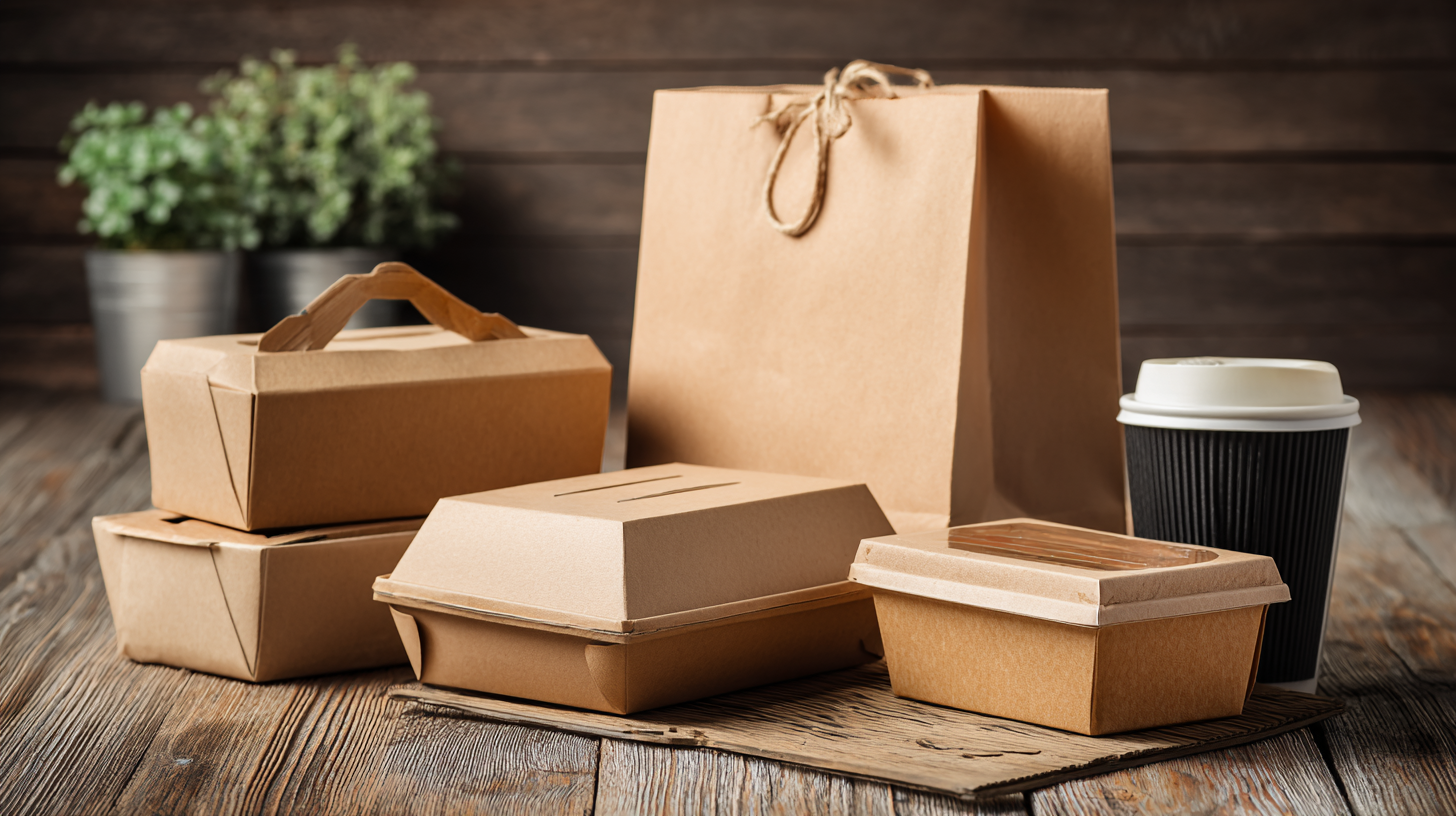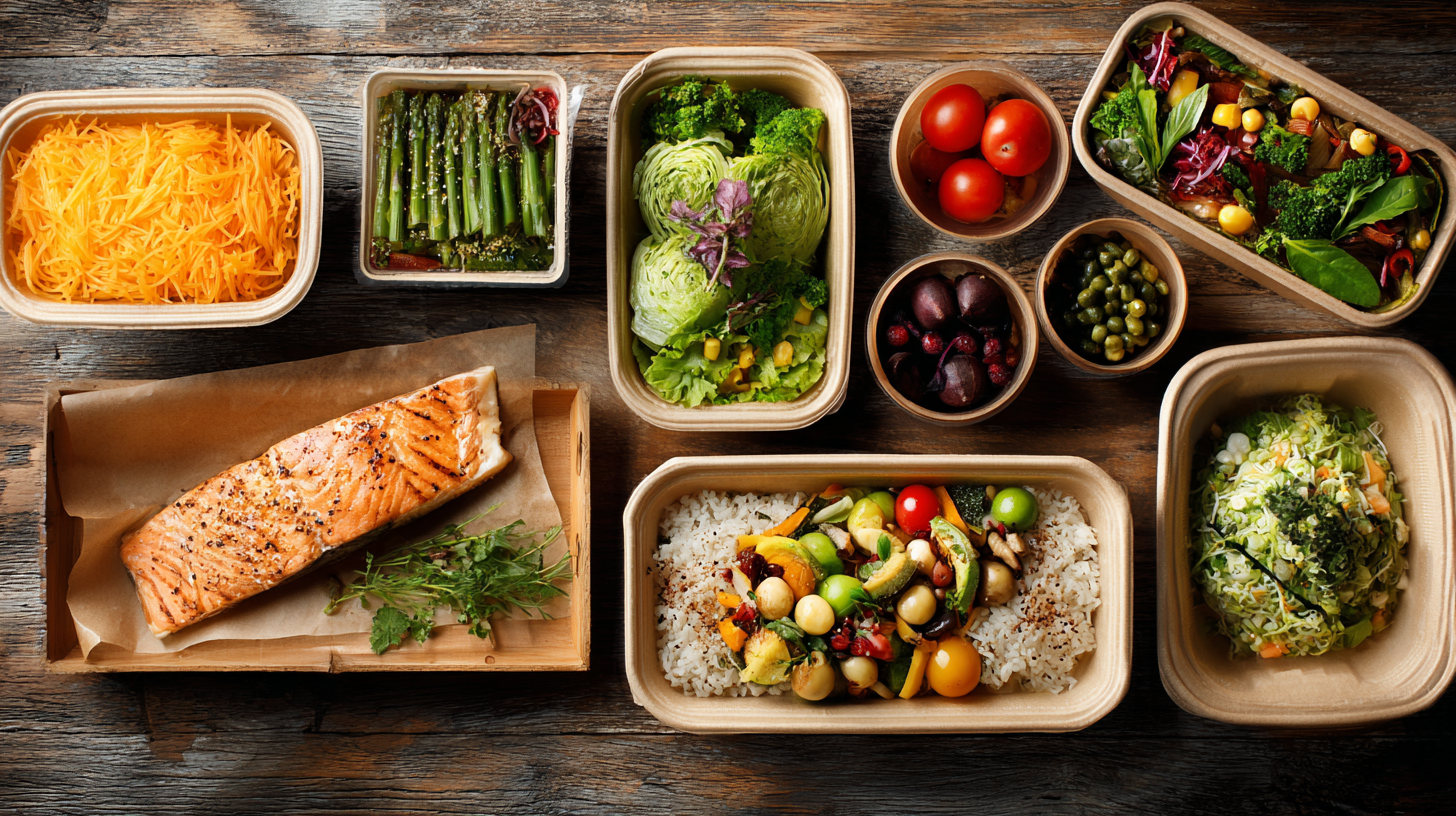Ultimate Guide to Choosing the Best Food Packaging Solutions for Your Business
In today's competitive market, choosing the right food packaging solutions is crucial for businesses aiming to enhance product longevity and maintain consumer safety. According to a report by Smithers Pira, the global food packaging market is projected to reach $500 billion by 2024, driven by increasing consumer demand for convenience and sustainability. However, many companies face challenges when it comes to selecting the appropriate food packaging types, which can lead to spoilage, wastage, and ultimately, financial losses. In fact, a study from the Food and Agriculture Organization indicates that approximately one-third of all food produced globally is wasted, much of which can be attributed to inadequate packaging solutions. This guide aims to address common problems associated with different types of food packaging and equip businesses with the knowledge necessary to make informed decisions that align with their specific needs and market trends.

Benefits of Sustainable Food Packaging Solutions: Reducing Environmental Impact
In recent years, the demand for sustainable food packaging solutions has surged, reflecting a growing consumer awareness of environmental issues.
The global green packaging market is projected to reach approximately $311.99 billion by 2024, with a robust growth trajectory anticipated as it climbs to over $462.71 billion by 2032.
This growth, driven by a compound annual growth rate (CAGR) of 5.05%, highlights the urgent need for businesses to adopt eco-friendly packaging alternatives.
Bamboo packaging, for instance, is increasingly recognized for its sustainability and versatility.
The market for bamboo packaging encompasses materials such as virgin pulp and recycled pulp, with products like trays and clamshells leading the way.
This shift toward greener options aligns with broader trends in consumer preferences favoring environmentally friendly products, which are projected to expand the sustainable food packaging market significantly.
It is estimated that the environmentally friendly and sustainable food sector will reach a staggering $400 billion by 2032, growing at a CAGR of 6.8% from 2024 to 2032, further emphasizing the importance of integrating sustainable practices in food packaging to meet both regulatory standards and consumer expectations.
Cost-Effectiveness of Innovative Food Packaging Technologies for Business Growth
In the highly competitive food industry, choosing the right packaging solutions can significantly impact your business growth. Cost-effectiveness is a critical factor, especially when innovative food packaging technologies can lead to substantial savings in the long run. By investing in advanced materials and designs, businesses can reduce waste, extend product shelf life, and enhance consumer appeal—all while minimizing operational costs. For example, biodegradable packaging options not only attract environmentally conscious consumers but also reduce disposal costs and align with sustainability goals.

Moreover, innovative packaging technologies can streamline production processes and improve supply chain efficiency. Automation and smart packaging solutions can lead to reduced labor costs and increased accuracy in inventory management. Additionally, utilizing packaging that minimizes damage during transit can lower losses associated with returns and spoilage. As businesses embrace these innovations, they can enhance their brand image and foster customer loyalty, which is essential for sustainable growth in a crowded market. By prioritizing cost-effective packaging solutions, businesses position themselves to thrive and adapt in an ever-evolving landscape.
Enhancing Food Safety with Advanced Packaging Materials and Techniques
In the ever-evolving landscape of food packaging, advanced materials and techniques are pivotal in enhancing food safety. The smart packaging market is anticipated to reach
$23.41 million in 2023, with a robust compound annual growth rate (CAGR) of 5.88% projected from 2024 to 2031. This growth underscores the increasing demand for packaging solutions that not only preserve the integrity of food products but also ensure their safety throughout the supply chain.

Consumer Preferences and Trends: The Role of Packaging in Brand Loyalty
In today's competitive market, packaging plays a pivotal role in shaping consumer preferences and fostering brand loyalty. A recent report by Smithers Pira highlights that 72% of consumers say that packaging design influences their purchasing decisions. This demonstrates that businesses must be strategic in their choices, as effective packaging can create a lasting impression and convey brand values. For instance, sustainable packaging has garnered significant attention, with 61% of consumers willing to pay more for eco-friendly options, according to a study by Nielsen.
Furthermore, the psychological impact of packaging cannot be understated. Research indicates that visually appealing packaging can enhance perceived product quality, with 93% of consumers reporting that visual appearance is the most important factor in their purchase decision. Packaging serves not only as a protective layer but also as a brand ambassador that tells a story. Brands that prioritize distinctive and innovative packaging designs are more likely to build a loyal customer base, as they resonate with consumers on an emotional level, fostering a sense of connection and trust towards the brand.
Ultimate Guide to Choosing the Best Food Packaging Solutions for Your Business
| Packaging Type | Consumer Preference (%) | Sustainability Aspect (%) | Brand Loyalty Impact (%) |
|---|---|---|---|
| Recyclable Packaging | 65 | 85 | 70 |
| Biodegradable Packaging | 72 | 90 | 75 |
| Reusable Packaging | 58 | 78 | 65 |
| Plastic Packaging | 45 | 30 | 40 |
| Composite Material | 52 | 65 | 55 |
| Edible Packaging | 34 | 88 | 60 |
Regulatory Compliance in Food Packaging: Ensuring Safety and Quality Standards
When it comes to food packaging, ensuring regulatory compliance is crucial for maintaining safety and quality standards. According to the Food Packaging Forum, over 30% of food safety issues can be traced back to inadequate packaging practices. As businesses strive to deliver safe and high-quality products, understanding the specific regulations governing food packaging becomes essential.
In the United States, the FDA mandates that all materials used in food contact applications must be safe and suitable for their intended use, which calls for a thorough knowledge of materials and manufacturing processes.
Moreover, a report from the European Commission indicates that 60% of consumers are concerned about the safety of food packaging, highlighting an increasing demand for transparency and compliance. This pressure from consumers, coupled with stringent regulations, drives businesses to prioritize safety in packaging design.
Companies that familiarize themselves with relevant regulations, such as those outlined in the FDA’s Code of Federal Regulations and the EU’s Regulation (EC) No 1935/2004, not only ensure compliance but also gain consumer trust and enhance their brand reputation. Investing in compliant packaging solutions is therefore not merely a regulatory obligation but also a strategic move to safeguard public health and elevate brand reliability.
